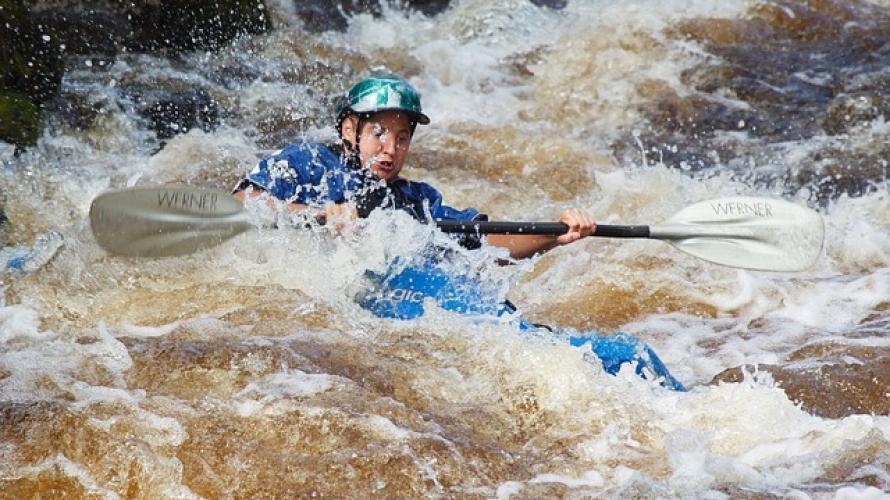
Kayaking Safety: Tips for a Safe & Adventurous Day
~Ashley Casey
Kayaking enables us to connect with the outdoors in ways that no other activity can. Kayakers get to explore the world just inches above the water surface, and in vessels that get us to areas that our two feet cannot. It is that aspect of being taken from our usual surrounding and into the unknown that makes kayaking so thrilling.
But as with any outdoor activity, kayaking comes with certain risks. If you fall into cold water and are unable to get out for a long time, you risk getting hypothermia. Other dangers include drowning, dehydration and impact injuries.
If you want to enjoy your kayaking adventure, you need to be prepared for all these risks. Here are a few tips for a safe and adventure-filled kayaking trip.
Equipment: What to Bring?
Packing for your kayaking trip is loads of fun. You get to determine what you’ll use and try out new gadgets. This whole process enables you to anticipate what your adventure will be like. One of the things we recommend you invest in is the best sit on top kayak. This is particularly important for first-time kayakers and those who’re always worried about their boats capsizing.
A sit on top kayak is simply a craft that has a sealed hull and molded seat for easy entry and exit. The fact that the craft is completely sealed means that you can roll back over even if it capsizes. With a sit-inside kayak, the craft would quickly become filled with water, making it harder to use it again.
Even though we’ve cited the possibility of flipping underwater several times, this is a very unlikely occurrence if you’re using a stable, high-quality sit on top kayak.
Apart from a sit on top kayak, other gear you need to bring are floating devices, paddle floats, ropes, whistles and flares and dry-bags.
Work as a Team
Kayaking, especially for the novice, is best done with a group of friends or other experienced paddlers. But even pro kayakers can run into trouble when kayaking solo as the weather and water conditions are unpredictable.
For instance, if there is heavy rain upstream, the river can quickly be transformed into an area with a dangerous set of rapids. Similarly, if the direction of the wind changes rapidly, paddling can be more difficult and exhausting.
In the event of such risky situations, it’s a good idea to have people you can rely on to rescue you or keep you safe. If you don’t know any experienced kayaker, try enrolling in a club or taking a guided kayaking tour as opposed to going solo.
Plan your Route
The easiest way to mitigate the dangers associated with kayaking is to plan your route beforehand. When doing this, ensure you take all important factors into consideration. For instance, just how experienced are you in kayaking? Are your crew members more skilled in this activity? What will the weather be like?
One of rule of thumb is to take only those routes that are protected from strong winds and waves. Also, your kayaking spots should be within reasonable swimming distance from the shore.
If you’ll be kayaking in the sea, then be sure to attend an advanced kayaking course first. Sea kayaking can be more thrilling, but it also poses more risks as it presents tougher conditions in terms of waves, tides and winds.
Before heading out, inform at least one person who is staying on dry land. Let them know where you plan to go, how long you’re likely to take and how many people are accompanying you for the trip.
Nutrition and Hydration
As mentioned earlier, one of the risks of kayaking is getting dehydrated. Most of the time, you’ll be in remote areas with no access to foods or drinks. Factor in the amount of paddling you have to do and the fact that you can’t communicate with the outside world.
Therefore, it’s very important that you plan what you will eat and drink while on your adventure. Pack plenty of high energy food bars because they’re easy to store and they don’t go bad. You can also pack some fruits although these will have to be consumed within a short time. In addition, bring plenty of water.
Learn Basic Safety Maneuvers
Before you start your adventure, you should understand and practice the necessary safety maneuvers. When practicing these drills, opt for calm, shallow waters. Also, have an experienced kayaker with you.
If you’re still not confident in your kayaking skills, it’s best to stay within swimming distance of the shore. These are the main safety moves you should know:
The Capsize: capsizing is the most common risk. Thus, you should learn what to do in case it happens. If you’re using a sit on top kayak, then it’s easy to exit it. However, if you’re using a sit in kayak, learn how to exit your craft swiftly and safely.
The Wet Entry: after exiting your kayak, the step that follows is locating it and re-entering. Unfortunately, it’s much harder to enter your vessel from the water than land, which is why you need to practice this skill.
The Eskimo Roll: this is a more advanced maneuver as it entails flipping your kayak to the right position without exiting it. Rolling is not a self-taught skill. This is something you need to learn from a professional or experienced instructor.
Final Word
Follow the golden rules in our article for your kayak safety. Work as a team, invest in the right equipment, practice safety maneuvers and plan your route beforehand.
